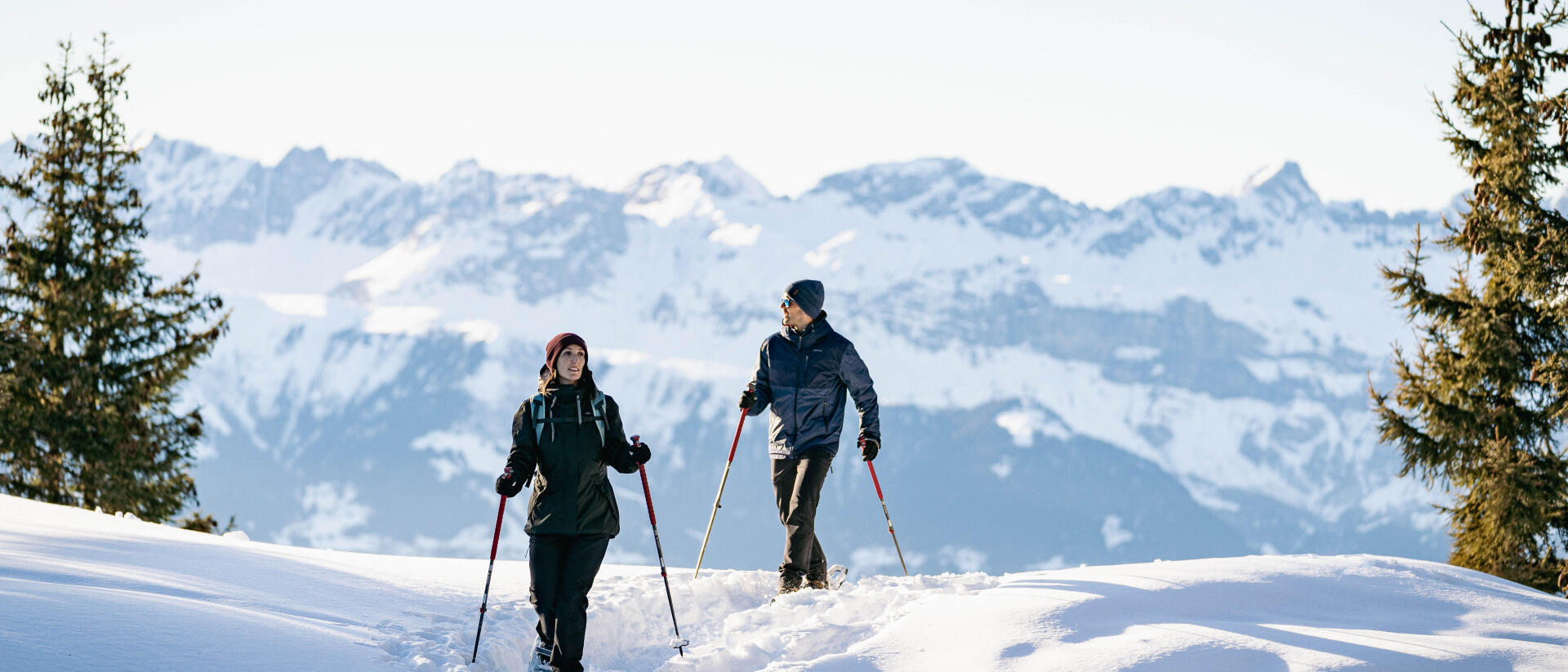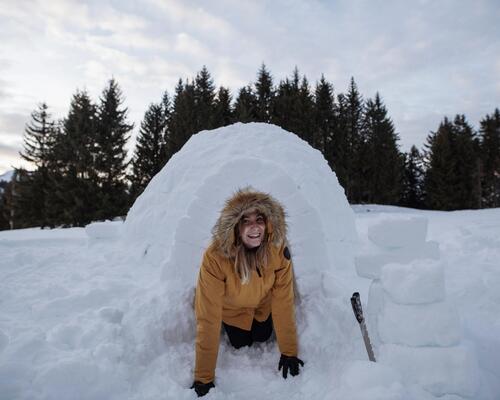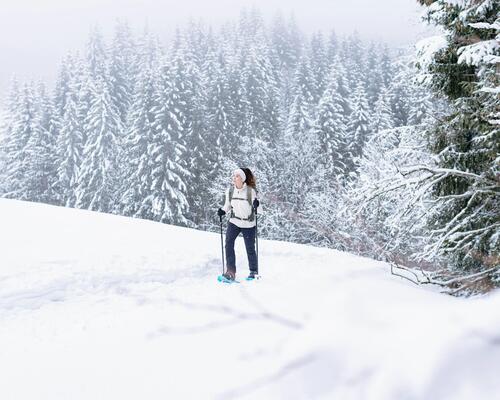The wind and build-ups
During snowfalls and the days that follow, the wind moves the snow. It will consistently accumulate on the side described as “downwind” (in the opposite direction of the prevailing wind) of hills and peaks, but also on slopes if it is on a rock or unstable ground.
Look around you carefully: little clues allow you to work out the direction of the prevailing wind. This therefore lets you work out on what slopes the build-ups will be on in the form of snowdrifts and, in advance, possible wind slabs.
Snow sintering is one of these clues. Small bulges are formed on the surface of the snowy blanket. They appear rough sided or in stairs. This side is the wind’s direction. Photo: François Rapin / Cemagref
Another clue: The little trees on the subalpine level. They fight the natural conditions to survive The conifers adapt particularly well and develop a shelter described as “feathered”, by allowing their branches that face the direction of the wind to die. The side on which the tree will grow its branches horizontally and very often on ground level, indicates the “downwind” side.
Each peak or marked relief must imply that a snowdrift has formed. It will be more or less high and overhang more or less. It is extremely dangerous to go round it. While traversing the peaks, you always go for the “windward” side, where there isn’t much snow. In any event, you should stay well back, several meters away from the edge of the snowdrift. They are nearly always very overhanging.




